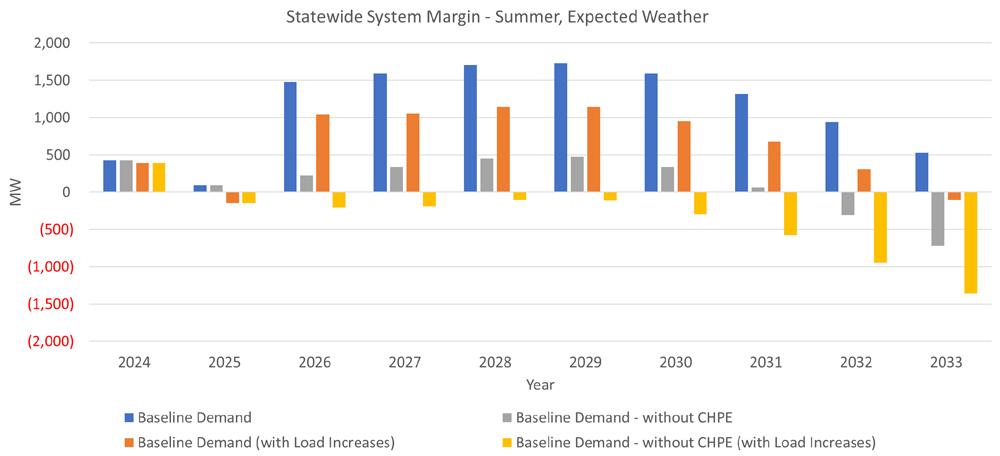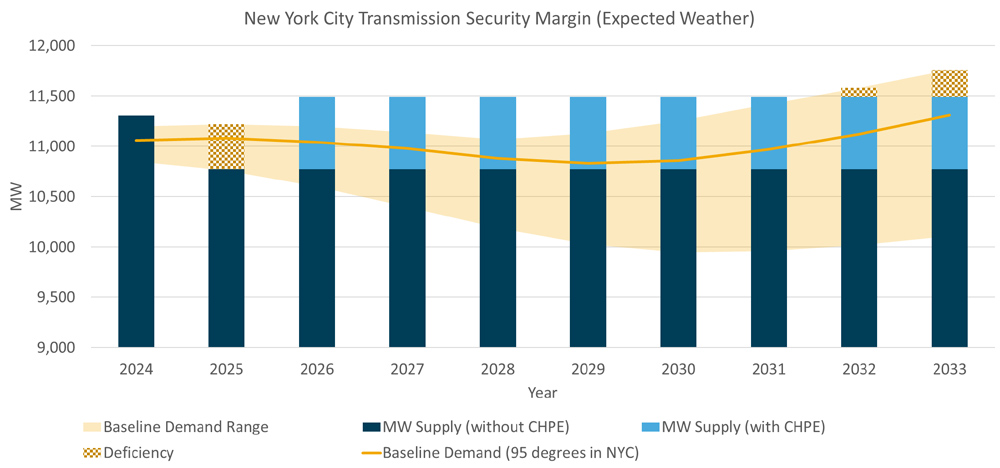Grid-enhancing technologies (GETs) could offer significant savings, but an industry that is conservative when it comes to grid operations and planning needs to get used to them first, regulators heard Sunday at the Joint Federal State Task Force on Electric Transmission in Austin, Texas.
The motivation for expanding the use of GETs is clear, with the electric industry undergoing a massive transformation that will see its share of total energy use expand from 21% today to 39% by 2050, while decarbonizing power generation, said Andrew Phillips, vice president of transmission and distribution infrastructure for the Electric Power Research Institute.
“There are about 400,000 miles of transmission lines 100 kV and above in the United States,” Phillips said. “We’ve been building them at a rate of about 2,000 miles per year; we are going to have to double that rate to meet that goal to integrate all of those lower-cost and also carbon-free renewables.”
Getting more use out of transmission lines and related infrastructure such as substations and transformers through GETs — such as dynamic line rating (DLR), advanced conductors or topology control — would make that work easier, he said. Different technologies would have different uses because the issues around the grid vary depending on the exact infrastructure.
Short lines (30 miles or fewer) are the ones that are impacted by temperature the most and would benefit from DLRs that take into account actual temperatures, wind speed and other conditions, Phillips said. Generally, the industry allows only as much power through such transmission lines as would work on the hottest day of the year with low wind speeds, but more often than not, they could handle more electricity.
Advanced conductors also would benefit such transmission lines because traditional transmission can operate only up to 93 degrees Celsius, while newer technologies can run more than twice as hot. Such new conductors have been available for a decade, but the industry has longer timeframes than that, with utilities needing to know they will last for many decades.
“For the last 10 years, EPRI has been doing tests on all of these new advanced conductors, and developed a test that can be put into a specification, so that utilities can acquire these conductors with confidence and knowing that they will last for 40 or 50 years,” Phillips said.
Shorter lines would also benefit from DLRs, but the industry needs to get accurate data on a range of things that impact transmission capacity, including temperature, wind speed and the amount of sunlight hitting them. Many technologies are available to measure those factors, with EPRI and its industry partners determining what works best and where, Phillips said.
“If it’s going to become a day-to-day thing, where we’re going to incorporate these things, we need standards and specs, just like we’ve got standards and specs for transformers, insulators [and] conductors,” Phillips said.
The changing capacity of transmission lines is something grid operators are not used to, and it implies a greater risk, so they will have to familiarize themselves with that before it becomes common, he added. It only makes sense that grid operators are conservative.
“Why are they conservative? Because you want to make sure the lights stay on, right?” Phillips said. “But that conservatism is a challenge when you’re trying to incorporate a new technology and increase the risk. … Maybe a reasonable risk, but a higher risk.”
While such technologies offer savings, they cannot replace transmission expansion entirely, FERC Commissioner Mark Christie said. DLR is “dynamic,” which he said means it is always changing; sometimes it can free up more capacity, but other times not.
“From a planning standpoint, how do you work in a dynamic [system]?” Christie asked. “We know there’s tremendous potential — we know they can save a ton of money — where and when they work.”
From a long-term planning point of view, predicting the wind in 10 years is just not feasible, but DLRs can be very useful in a more immediate, economic way, where they can be used to bring cheaper supply to customers, Phillips said. Long-term planners still have to use the static rating of the line because the grid will experience times when it is hot and the wind is not blowing.
Real-time operators have some leeway when it comes to DLR because of conductors’ “thermal lag,” so that if the wind stops blowing, they have a couple of hours to update power flows over dynamically rated transmission, Phillips said.
In MISO, the planning process does not account for GETs, and planners are skeptical about factoring them in for the long term, but the grid operator is much more open to them when it comes to operations, said Michigan Public Service Commission Chair Dan Scripps.
“RTOs are in many cases able to institute reconfigurations when there is a pressing reliability issue in real time but are more hesitant to act in a proactive way that is only focused on economic benefits,” Scripps said.
That could change going forward, especially with the ability to use different transmission line ratings for the summer and winter in planning going forward. When the conditions for DLRs are not right, it might make sense to use topology control, with which grid operators can tweak the system by, for example, shutting down one piece of infrastructure that frees up more power flow overall, Scripps said.
A major issue to getting GETs rolled out around the grid is the financial incentives for utilities, which are biased toward spending more capital and thus earning more returns, FERC Commissioner Allison Clements said.
“The short answer to how do you better integrate it is for the commission to require utilities to consider whether or not to use them, and then to align the financial incentives so that they’re encouraged when they’re considering them,” she said.
It is also important to dispel the “myth” that GETs are new technologies that are rife with risks when deployed.
“The existence of those risks shouldn’t stop us from starting to require consideration of deployment, and certainly the many cases we’ve heard so far about entities that have used dynamic line ratings to the benefit of customers have found ways to manage those,” Clements said.
Acting FERC Chair Willie Phillips offered an analogy for how GETs will impact the industry by comparing them to the change from road atlases to GPS programs on smartphones.
“When you think about how to use GPS, you don’t use it like a map,” Phillips said. “You don’t set it on time and forget about it.”
The software will reroute drivers around traffic jams and to quicker routes to their destination, with drivers using GPS at every turn throughout their journeys.
“I think that’s exactly how we should use GETs,” said Phillips. “We should use it an interconnection queue phase; we should use it during construction — I say ‘use,’ [but] I mean ‘consider.’ We should consider it during the construction phase. We should consider it after construction and during implementation.”
Just before the task force meeting, Grid Strategies released a report showing growing congestion costs around the country, with $12 billion in RTO markets during 2022 and more than $20 billion around the country, Phillips noted.
“If we can use GETs to bring that number significantly down, I think it’s incumbent upon regulators to do just that,” he added.

